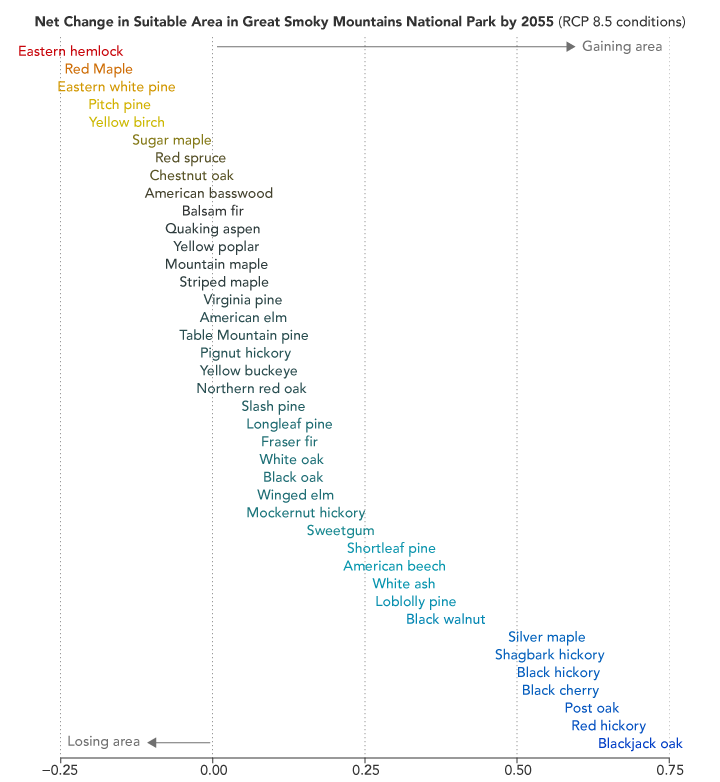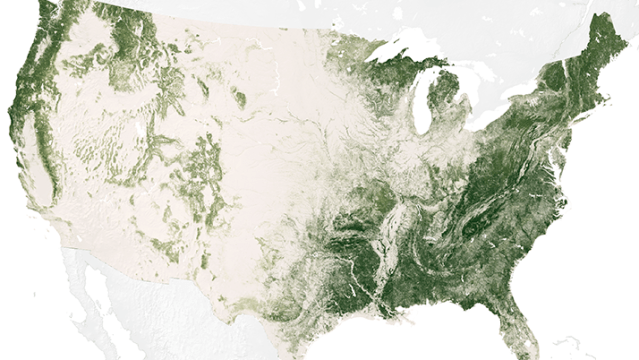The natural world is changing in significant ways thanks to human-caused climate change. While some species are flourishing, others are already gone forever. Now scientists are looking specifically at how US forests will transform due to the increase in atmospheric carbon dioxide. Bye, Eastern hemlock, it was nice knowing ya.
Researchers at the Woods Hole Research Center (WHRC) did some modelling to see what the forests of a warmed planet might look like. Studying forests in three different parts of the Appalachians — Delaware Water Gap National Recreation Area (Pennsylvania and New Jersey), Shenandoah National Park (Virginia), and Great Smoky Mountains National Park (North Carolina and Tennessee) — they used current climate models to simulate future conditions, if emissions increase at the rate they’re expected to. It’s not just warmer temperatures that will affect which trees grow, but also an extended growing season and potential for increased drought.

Habitat loss and gain for trees the Great Smokey Mountains
Eastern hemlock and most maples, which like cool weather and moist soils, will lose habitat dramatically, while most hickories, Black cherry, and Blackjack oak will proliferate. There will also be changes in which trees will be found at different elevations, meaning mountains will lose evergreens like firs and spruces which not only help keep temperatures cool, but also are more resistant to wildfire.
There’s also something that humans did many years ago which has already made these forests less resilient in the face of climate shifts — cutting so many of them down. The US has about 30 per cent less forested land than it did in 1630, and many of the current forested areas are filled with younger trees, which are far less diverse. “There are hardly any forests in the eastern US that have never been cleared — maybe only a few per cent,” said WHRC’s Patrick Jantz, “And younger, re-growing forests tend to have less structural complexity and different species assemblages.”
Who could have guessed that climate change is only partially to blame for changing the habitats of our trees? The fate of our future forests was sealed when pioneers started clearcutting the country so many centuries ago.
[NASA]
